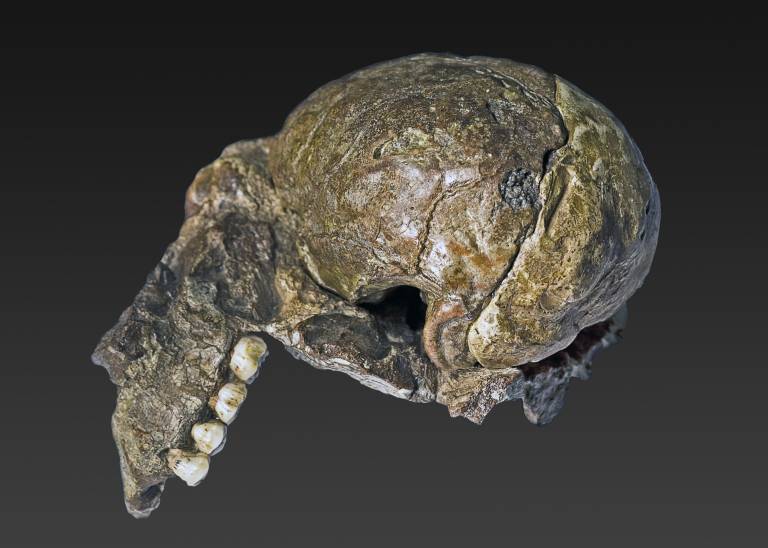Relationship between interproximal and occlusal wear in Au. africanus and Neanderthal molars
12 September 2023
The analysis of dental wear is a valuable tool to obtain information about diet, ecology, and daily-task activities in past human populations and in extinct hominin species (Molnar, 1972; Smith, 1984; Kaifu et al., 2003).

The analysis of dental wear is a valuable tool to obtain information about diet, ecology, and daily-task activities in past human populations and in extinct hominin species (Molnar, 1972; Smith, 1984; Kaifu et al., 2003). Interproximal wear is found along the mesial and distal aspects of tooth crowns between adjacent teeth. Similar to occlusal wear, the contact between neighboring teeth promotes the formation of interproximal wear facets (Whittaker et al., 1987; Benazzi et al., 2011; Sarig et al., 2013, 2015). However, the formation of interproximal wear is complex and is caused by a combination of several factors, not necessarily directly related to diet. The newly erupted posterior teeth push forward toward a common center by the action of the mesial drift, a complex mechanism involving the migration of teeth by bone remodeling and dental resorption (Moss and Picton, 1970).
It has been observed that prehistoric human populations and recent hunter–gatherer groups displayed greater levels of interproximal wear than contemporary human populations Moss and Picton, 1967; Wolpoff, 1971). Based on these observations, Hinton (1982) examined the interproximal wear facet breadth in Native North Americans from different chronological times finding interpopulation variation in the amount of interproximal wear. Corruccini (1990) analyzed the dentition of modern Australian Aborigines finding a considerable reduction in the amount of interproximal wear when compared to more traditional hunter–gatherer groups. Similarly, Sarig et al. (2016) measured the amount of interproximal wear areas of Pleistocene human remains from Qesem Cave (400–200 ka) and compared them with those of recent modern humans finding lower levels of interproximal wear in the latter group.
These studies suggested that the observed difference in interproximal wear depended on the type of food consumed by these populations and on the way they prepared their meals (Hinton, 1982; Corruccini, 1990). Hinton (1982) further suggested that interproximal wear is influenced by the magnitude and frequency of applied occlusal forces, which are indirectly related to diet. However, while interproximal wear is directly related to the magnitude of the masticatory force, the rates of occlusal wear depend upon both masticatory force and physical properties of the ingested food. It is therefore possible that occlusal and interproximal wear may not be closely related as has been assumed (Wolpoff, 1971). A few studies investigated the relationship between interproximal and occlusal wear, leading, however, to conflicting results (Hinton, 1982; Whittaker et al., 1987; Lukacs and Pastor, 1988; Deter, 2012; Sarig et al., 2015). While previous studies found a positive association between the two wear variables (Hinton, 1982; Whittaker et al., 1987; Lukacs and Pastor, 1988), more recent analyses found a weak (Sarig et al., 2015, 2016) or negative relationship between occlusal and interproximal wear, especially in more heavily worn molars (Deter, 2012).
The aim of this study is to answer this question by using the occlusal fingerprint analysis (OFA) method (Kullmer et al., 2009), a three-dimensional (3D) digital approach based on quantitative analyses that measure macrowear variables and links them with dental function, masticatory movements, culture, and diets (Fiorenza et al., 2018, 2019). The advantage of OFA is the use of high-resolution 3D digital models of teeth that allows to accurately measure different occlusal wear variables (Kullmer et al., 2009). The analysis of these parameters allows to describe the major occlusal movements responsible for the formation of wear facets, information that can be used to track changes in dental function, jaw movements, and diet (Fiorenza et al., 2011, 2015, 2022; Kullmer et al., 2020; Harty et al., 2022).
Moreover, while previous studies only measured the breadth of interproximal wear using calipers (Hinton, 1982; Deter, 2012), here we quantify the surface area of the entire interproximal wear facets using metrology software and 3D digital models of teeth. Sarig et al. (2013, 2015, 2016) have measured the size of interproximal wear facets instead of buccolingual distances, which proved to be a more reliable approach to accurately evaluate the amount of interproximal wear considering that the shape of these facets can be considerably variable, ranging from ovoid to subrectangular types.
In this study, we investigate the correlation between occlusal and interproximal wear by examining the molars of Australopithecus africanus and Neanderthals. We test two main hypotheses: hypothesis 1) we expect to find a positive correlation between interproximal and occlusal wear. Specifically, the size of interproximal wear facets should increase in those molars characterized by larger occlusal wear, as suggested by Hinton (1982) and hypothesis 2) the interproximal wear should be inversely related to wear plane angles since in more advanced wear stages, the occlusal crowns flatten because of cusp removal (Smith, 1984; Fiorenza et al., 2018, 2020). Therefore, we should find larger interproximal wear facets in flatter molars (i.e., lower inclination values).
Luca Fiorenza, Waseem Habashi, Jacopo Moggi-Cecchi, Stefano Benazzi, Rachel Sarig
 Close
Close

